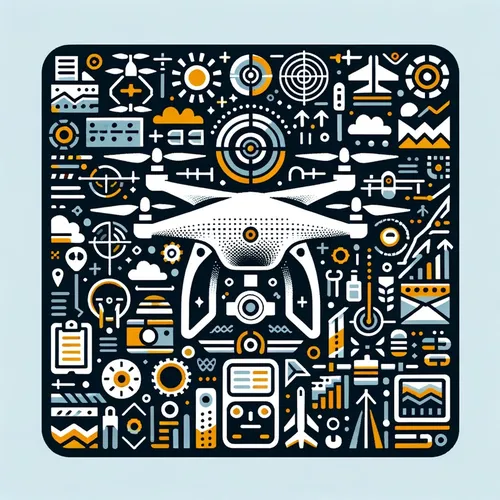Drone Pilots Soar: Sizzling Skills, Booming Biz, and Regulatory Revelations!
- Author
- Quiet. Please
- Published
- Fri 25 Jul 2025
- Episode Link
- https://www.spreaker.com/episode/drone-pilots-soar-sizzling-skills-booming-biz-and-regulatory-revelations--67109010
This is you Professional Drone Pilot: Flight Tips & Industry Updates podcast.
For professional drone pilots, the landscape continues to evolve rapidly, promising greater opportunities but also demanding even sharper skills. With the North America drone market expected to reach over twenty six billion US dollars by 2033, according to Research and Markets, commercial pilots now serve industries from energy and real estate to logistics and agriculture. Precision farming, construction monitoring, and warehouse inventory management are just a few of the applications fueling this explosive growth.
To get ahead, pilots should focus on advanced flight techniques like mastering autonomous waypoint missions and obstacle avoidance systems. Incorporating real-time data overlays and automating mapping workflows not only improves efficiency but elevates the deliverables for clients. For aerial inspection specialists, building confidence with beyond visual line of sight operations, which are becoming more viable following regulatory progress in 2025, offers a significant competitive edge. The Federal Aviation Administration has been refining rules around beyond visual line of sight, enabling operators to cover larger distances and tackle more complex inspections without direct eye contact with the drone, a change rapidly impacting logistics and infrastructure sectors.
Routine equipment maintenance remains critical. Schedule regular firmware updates, clean sensors and props after every flight, and log battery cycles to maximize lifespan. Many insurance providers now require detailed maintenance logs for liability coverage, so digital recordkeeping will save headaches and may even lower your premiums.
As for business trends, the rise of Drone as a Service is reshaping how companies invest, letting small operations compete with larger fleets by offering on-demand drone work with scalable pricing. Building lasting client relationships hinges on clear communication, transparent pricing, and well-defined deliverables. Market leaders recommend tiered service packages, enabling clients to scale their projects without ambiguity in scope or fees.
On the certification front, pilots must stay compliant with new licensing updates. In the United States, drone pilots must renew their Federal Aviation Administration registration every three years, and complete recurrent online training every twenty-four months. Those flying in controlled airspace or near people should be aware of the Advanced Operations Certificate and in-person flight reviews according to updated regulatory standards.
Weather continues to be a deciding factor in flight planning. Pilots should routinely integrate advanced weather apps and real-time wind data into preflight checks to avoid costly delays and rescheduling.
In current news, commercial drone use for wildfire monitoring surged in July, transforming real-time response for public safety teams, according to industry reports. Another headline: a domestic U.S. drone manufacturer signed a major infrastructure inspection deal with a state transportation agency, marking a shift toward security-compliant, non-Chinese devices. Finally, the Federal Aviation Administration released updated guidance on drone insurance best practices this month, with clear recommendations for liability coverage minimums tailored to different commercial sectors.
Looking to the future, shifts in regulation, open data protocols, and the adoption of artificial intelligence will all help expand the scope of what drone professionals can offer. Build your skillset around autonomy and data analysis, diversify your industry portfolio, and stay current with both equipment and legal obligations.
Thank you for tuning in. Come back next week for more expert guidance. This has been a Quiet Please production, and for me, check out Quiet Please Dot A I.
For...
